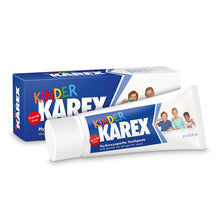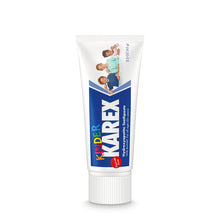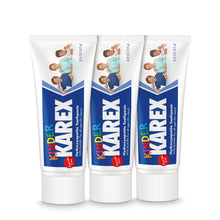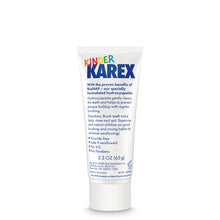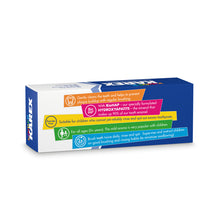A Safe Toothpaste for Kids
Kinder Karex is a fluoride-free children's toothpaste with the benefits of BioHAP (hydroxyapatite). Kinder Karex gently cleans the teeth and helps prevent plaque buildup with regular brushing.

Kinder Karex Benefits
- Fluoride-Free
- BioHAP (hydroxyapatite) primary ingredient
- Safe if accidentally swallowed
- Kid approved, mild minty taste
- For all ages (0+ years)


Modern Oral Care
BioHAP stands for biomimetic hydroxyapatite. Hydroxyapatite is the substance from which teeth are made. Approximately 97% of our tooth enamel and 70% of our dentine consist of hydroxyapatite.
Hydroxyapatite is the modern oral care ingredient that is becoming popular because of its many benefits including safe if swallowed.
How to Use Kinder Karex

Safe If Accidentally Swallowed
Young children are likely to swallow toothpaste because they have not learned to properly spit it out yet. BioHAP is safe if accidentally swallowed.

Kid Approved Taste
Kids have sensitive taste buds, and with that can come the challenge of finding a toothpaste that is not too “spicy” for their taste. The mild minty flavor in Kinder Karex was selected by kids for kids.

For All Ages (0+ years)
Gentle enough to use on the first tooth and to continue using for the years to come.

Fluoride-Free
With the debate over the safety and over exposure to fluoride, Kinder Karex is an alternative fluoride-free toothpaste for those concerned about fluoride.
Is your child at risk of dental fluorosis?
Check out our simple guide for parents. Find out what happens when your children swallow toothpaste, sources of fluoride, overexposure limits, proper brushing habits & much more! This actionable guide is a must read for all parents of young children. Click here.







